order
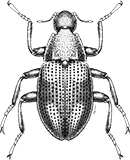
Coleoptera
“Adult Beetles”

Coleoptera
“Larval Beetles”

Diptera
“True Flies”

Ephemeroptera
“Mayflies”

Hemiptera
“True Bugs”

Lepidoptera
“Aquatic Caterpillars, Snout Moths”

Megaloptera
“Alderflies, Dobsonflies, and Fishflies”
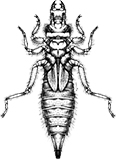
Odonata
“Dragonflies and Damselflies”

Plecoptera
“Stoneflies”

Trichoptera
“Caddisflies”
genus
Parapoynx
“Aquatic Caterpillars, Snout Moths”
Genus Overview
There are 7 North American species of this genus. Larvae of Parapoynx feed on pondweed (Potamogeton), watermilfoil (Myriophyllum), waterhyssop (Bacopa), eelgrass/tape grass (Vallisneria), and broadleaf plants such as yellow water-lily (Nuphar), water lily (Nymphaea), water-shield (Brasenia), floating-heart (Nymphoides), golden-club (Orontium), and other freshwater species. They often cut circular pieces from the edges of broadleaf species to cover themselves while feeding on the tops of the leaves, other times drilling from the top of the stem downward. Pupation occurs in a silk-lined chamber under the leaf patch or in the plant stem.
Characteristics
POLLUTION TOLERANCE
Mid-Atlantic: up to 5
0 = least tolerant, 10 = most tolerant
FEEDING HABITS
Shredder / Herbivore
MOVEMENT
Burrower
Climber
Swimmer
Climber
Swimmer
DISTRIBUTION
Widespread (east of the Rocky Mtns.)
HABITAT
Lentic-littoral
Diagnostic Characters
order
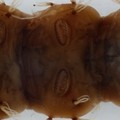
Abdominal Prolegs
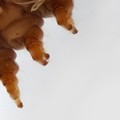
Short Legs
family
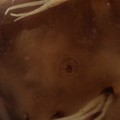
2 Setae in Front of Each Lateral Spiracle
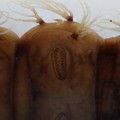
Prolegs on 3-6 with Crochets
genus
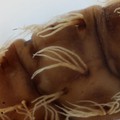
Branched Gills
+ Expanded Character List
Order:
Caterpillars with wings and wing pads absent. Eye spots usually present, but compound eyes absent. Short segmented legs present on thorax, not as long as abdomen. Underside of abdomen with several pairs of prolegs (fleshy nubs) with tiny hooks.
Family:
Ventral prolegs present on abdominal segments 3, 4, 5, 6, and 10. Segmented thoracic legs present. Gills sometimes present on sides of abdomen. Prolegs with crochets (tiny hooks) in transverse ellipses or bands.
Genus:
Body with filamentous gills, all branched.
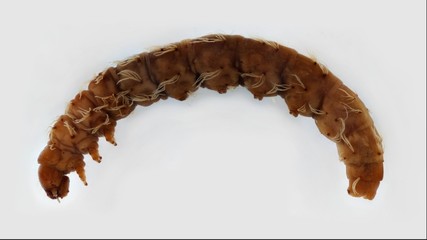

Lateral
Ventral



